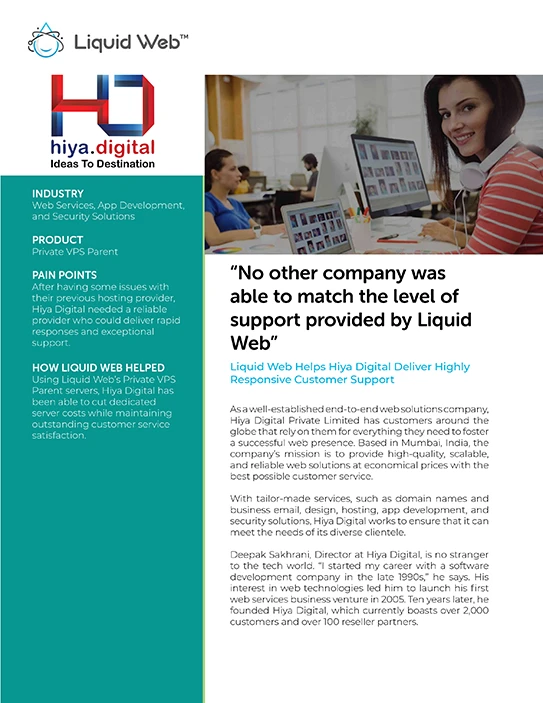In the ever-evolving world of gastronomy, the culinary landscape is constantly shifting, reflecting the changing tastes, preferences, and priorities of food enthusiasts worldwide. As we look ahead to the year 2024, several exciting food trends are poised to take center stage, shaping the way we experience and appreciate the art of cooking and dining.
Introduction
The culinary industry is a dynamic and ever-changing landscape, where innovation, sustainability, and global influences converge to create unique and captivating dining experiences. From the rise of plant-based proteins to the emergence of virtual dining, the food trends of 2024 promise to captivate and challenge our palates, while also addressing pressing environmental and health concerns. In this comprehensive blog post, we’ll explore the top food trends that are set to define the culinary landscape in the year 2024, delving into the driving forces behind these transformative shifts and the impact they will have on the way we approach food.
Plant-based Proteins

The Rise of Alternative Protein Sources
As the global population becomes increasingly conscious of the environmental impact of traditional animal-based protein sources, the demand for plant-based alternatives has soared. In 2024, we will witness a continued surge in the popularity of plant-based proteins, with a focus on innovative products that mimic the taste and texture of their meat-based counterparts.
| Protein Source | Key Characteristics |
|---|---|
| Soy-based Meat Alternatives | • Protein-rich, often used as a direct replacement for ground meat• Versatile in a wide range of dishes, from burgers to tacos |
| Pea Protein Isolates | • Offer a clean, allergen-friendly protein source• Gaining traction in the plant-based meat and dairy industries |
| Mycoprotein (Quorn) | • Derived from a fungus-based protein• Provides a meat-like texture and flavor |
- Increased investment and research in plant-based protein development
- Expanded availability of these alternatives in mainstream grocery stores and restaurants
- Growing consumer awareness and acceptance of plant-based protein options
Embracing Flexitarian Diets
As the line between plant-based and traditional diets continues to blur, the rise of flexitarian diets has become a significant trend in the culinary world. Flexitarians adopt a more flexible approach, incorporating both plant-based and animal-based proteins into their meals, allowing for a balanced and diverse dietary intake.
- Flexitarians seek to reduce their meat consumption while still enjoying occasional animal-based proteins
- This approach appeals to consumers who want to make more sustainable and health-conscious choices without fully eliminating their favorite animal-based dishes
- Restaurants and food manufacturers cater to this growing segment by offering a wider range of plant-based and hybrid menu items and products
The Emergence of Cultivated Meat
One of the most cutting-edge developments in the plant-based protein revolution is the emergence of cultivated meat, also known as lab-grown or clean meat. This technology involves the in-vitro cultivation of animal cells, allowing for the production of meat without the need for traditional livestock farming.
- Cultivated meat aims to address the environmental and ethical concerns associated with traditional animal agriculture
- Advancements in cell culture techniques and bioreactor technology have made cultivated meat a more viable and scalable option
- Regulatory approval and consumer acceptance will be crucial for the widespread adoption of cultivated meat in 2024 and beyond
Sustainable Packaging

Reducing Plastic Waste
As the global community becomes increasingly aware of the detrimental environmental impact of single-use plastics, the demand for sustainable packaging solutions has skyrocketed. In 2024, we will witness a significant shift towards more eco-friendly packaging options across the food and beverage industry.
- Increased use of compostable and biodegradable materials, such as plant-based plastics, paper, and bamboo
- Consumers actively seeking out brands and products that prioritize sustainable packaging
- Innovative packaging designs that minimize waste and promote circular economy principles
Embracing Refillable and Reusable Systems
Alongside the reduction of single-use plastics, the adoption of refillable and reusable packaging systems will emerge as a prominent trend in 2024. This approach encourages consumers to reuse containers, reducing the overall waste generated.
- Grocery stores and specialty food retailers offering refill stations for staple items, such as grains, spices, and household cleaners
- Beverage brands introducing reusable bottle programs, where consumers can return and exchange their containers
- Restaurants and cafes implementing reusable cup and container programs to minimize single-use waste
Traceability and Transparency
As consumers become more conscious of the environmental impact of their purchasing decisions, they will demand greater transparency from food and beverage brands. In 2024, we will see an increased emphasis on traceability, with companies providing detailed information about the sourcing, production, and sustainability of their products.
- QR codes, digital labeling, and blockchain technology enabling consumers to access comprehensive product information
- Brands highlighting their sustainability efforts, such as the use of renewable materials, carbon footprint reduction, and ethical sourcing practices
- Consumers empowered to make informed choices based on the environmental and social impact of their purchases
Global Flavors
Exploring Diverse Cuisines
The culinary landscape of 2024 will be marked by a heightened interest in global flavors and diverse culinary traditions. As people’s palates become more adventurous, they will seek out authentic and innovative dishes from around the world.
- Increased availability of international ingredients and condiments in mainstream grocery stores
- Restaurants and food trucks showcasing the nuances of regional cuisines, from Southeast Asian street food to South American delicacies
- Fusion dishes that blend flavors and techniques from multiple cultures, creating unique and exciting culinary experiences
Fermentation and Preservation Techniques
Alongside the exploration of global flavors, the year 2024 will witness a renewed appreciation for traditional food preservation and fermentation methods. Consumers will be drawn to the complex and intriguing flavors produced by these age-old techniques.
| Preservation Technique | Key Benefits |
|---|---|
| Pickling | • Extends the shelf life of fresh produce• Introduces tangy, acidic notes to dishes |
| Curing and Smoking | • Enhances the flavor and texture of meats and seafood• Preserves the integrity of the ingredients |
| Fermentation | • Introduces beneficial probiotics• Develops unique and complex flavors |
- Increased availability of fermented and preserved products, such as kimchi, kombucha, and artisanal charcuterie
- Chefs and home cooks embracing these techniques to add depth and complexity to their culinary creations
- Growing interest in the health benefits and sustainability aspects of traditional preservation methods
Exploring Regional Ingredients
In addition to the global flavor explosion, the food trends of 2024 will also highlight the use of locally-sourced, regional ingredients. Consumers will seek out unique and often overlooked produce, herbs, and spices that are native to specific geographic regions.
- Increased collaboration between chefs, farmers, and food producers to showcase the diversity of regional ingredients
- Consumers prioritizing the support of local food systems and the preservation of traditional agricultural practices
- The rise of “hyper-local” cuisine, where ingredients are sourced from within a tight radius of the restaurant or home kitchen
Virtual Dining Experiences
Immersive Dining Experiences
As technology continues to advance, the culinary world will embrace virtual and augmented reality to create truly immersive dining experiences. In 2024, we will see the emergence of restaurants and pop-up events that leverage these technologies to transport diners to captivating and immersive culinary journeys.
- Virtual reality (VR) experiences that allow diners to visually and auditorily explore the origins of their ingredients or the cultural traditions behind a dish
- Augmented reality (AR) enhancing the presentation and serving of meals, with interactive elements that engage the senses
- Multisensory experiences that integrate virtual elements with physical, tangible components, such as custom-designed tableware or interactive chef demonstrations
Remote Dining and Delivery
The COVID-19 pandemic has accelerated the growth of remote dining and delivery services, and this trend is expected to continue in 2024. Advancements in technology and logistics will enable seamless virtual dining experiences, where customers can enjoy high-quality, restaurant-caliber meals in the comfort of their own homes.
- Increased availability of premium meal kits, with pre-portioned ingredients and step-by-step instructions for at-home preparation
- Integration of virtual chef demonstrations, interactive cooking classes, and personalized dining experiences delivered directly to consumers
- Innovative packaging solutions that maintain the quality and presentation of meals throughout the delivery process
Gamification and Interactive Dining
To further enhance the virtual dining experience, we will witness the integration of gamification elements in 2024. Restaurants and food brands will leverage interactive technologies to create engaging and playful dining experiences that captivate their customers.
- Interactive menu apps that allow diners to unlock unique dishes or customize their orders through game-like challenges
- Augmented reality features that enable customers to virtually explore the origins of their ingredients or interact with the chefs during the meal preparation
- Collaborative dining experiences where multiple households can virtually gather and enjoy a shared meal, with opportunities for real-time interaction and gameplay
Health and Wellness Trends
Personalized Nutrition
As consumers become increasingly conscious of the impact of their dietary choices on their overall well-being, the demand for personalized nutrition solutions will rise in 2024. Advancements in technology and data-driven analysis will enable individualized dietary recommendations and meal plans tailored to each person’s unique health needs and goals.
- Comprehensive health assessments, including genetic testing and gut microbiome analysis, to determine individual nutritional requirements
- AI-powered diet and meal planning apps that provide customized meal recommendations based on personal health data and preferences
- Increased collaboration between healthcare professionals, nutritionists, and food brands to offer holistic, personalized nutrition programs
Functional Foods and Supplements
The pursuit of optimal health and wellness will also drive the growing popularity of functional foods and supplements in 2024. Consumers will seek out products that not only taste great but also offer targeted health benefits, from boosting immunity to supporting gut health.
| Functional Ingredient | Health Benefits |
|---|---|
| Probiotics | • Supports a healthy gut microbiome• Enhances digestive function and immune response |
| Adaptogens | • Helps the body adapt to and manage stress• Promotes overall well-being and resilience |
| Collagen | • Supports skin health and elasticity• Contributes to joint and bone strength |
- Widespread availability of functional foods, such as probiotic-infused beverages, adaptogen-infused snacks, and collagen-enriched protein powders
- Increased consumer education and awareness about the specific health benefits associated with various functional ingredients
- Emergence of personalized functional food and supplement regimens tailored to individual needs and goals
Sustainable and Ethical Practices
As consumers become more conscious of the environmental and social impact of their food choices, the emphasis on sustainable and ethical practices in the culinary industry will intensify in 2024. Individuals will seek out food brands and restaurants that prioritize sustainability, animal welfare, and fair labor practices.
- Increased transparency and labeling around the sourcing, production, and distribution of food products
- Consumers actively supporting local, small-scale producers and restaurants that champion sustainable and ethical business models
- Advancements in circular economy principles, with food waste reduction and upcycling becoming mainstream practices
Rise of Food Delivery Services
Convenience and Accessibility
The demand for convenient and accessible food delivery services will continue to surge in 2024, driven by the evolving lifestyles and expectations of modern consumers. Advancements in technology, logistics, and supply chain management will enable seamless, on-demand access to a wide range of culinary offerings.
- Expansion of third-party delivery platforms, offering a diverse selection of restaurant options, from fine dining to casual eateries
- Increased integration of delivery services into the operations of restaurants and food brands, providing customers with a streamlined ordering and fulfillment experience
- Innovative delivery methods, such as autonomous vehicles and drone technology, to enhance the speed and reliability of food transport
Ghost Kitchens and Virtual Brands
To meet the growing demand for food delivery, the rise of ghost kitchens and virtual food brands will become more prominent in 2024. These innovative models prioritize efficiency, flexibility, and cost-effectiveness, catering to the evolving needs of both consumers and food entrepreneurs.
- Ghost kitchens: Dedicated, off-premise food preparation facilities that focus solely on delivery and takeout, without the overhead of a traditional dine-in restaurant
- Virtual brands: Digitally-native food concepts that operate exclusively through delivery platforms, without a physical storefront presence
- Increased collaboration between established restaurant chains, food delivery platforms, and up-and-coming culinary talents to develop innovative virtual brand offerings
Personalized Delivery Experiences
To enhance the food delivery experience, we will see a growing emphasis on personalization and customization in 2024. Consumers will expect tailored service, curated recommendations, and seamless integration with their individual preferences and lifestyle needs.
- AI-powered recommendation algorithms that suggest menu items and meal options based on customer preferences, dietary requirements, and past ordering history
- Personalized packaging and presentation, with the ability to customize meal components, portion sizes, and even the temperature at which the food is delivered
- Subscription-based delivery services that offer personalized meal plans, with the option to customize frequency, dietary preferences, and add-ons
Innovative Food Technology
Advancements in Food Processing
The food industry will continue to embrace cutting-edge technologies to improve the efficiency, quality, and safety of food processing in 2024. From automation to AI-driven decision-making, these advancements will transform the way we produce, package, and distribute our food.
- Increased adoption of robotic and automated systems in food production, reducing manual labor and improving consistency
- AI-powered quality control and food safety monitoring, leveraging computer vision and sensor technology to detect defects and ensure compliance with regulations
- Blockchain technology enhancing supply chain transparency and traceability, enabling consumers to access comprehensive information about the origins and journey of their food
Alternative Protein Production
Building on the rise of plant-based proteins, the food industry will continue to explore and develop innovative methods for producing alternative protein sources in 2024. This includes the advancement of cultivated meat, as well as the exploration of novel protein-rich ingredients derived from sources like insects, algae, and fungi.
- Scaling up of cultivated meat production, with improved cost-effectiveness and regulatory approval in key markets
- Increased commercial availability of insect-based protein products, such as protein bars, powders, and meat alternatives
- Advancements in the cultivation and processing of algae and fungal-derived proteins, offering sustainable, high-quality alternatives to traditional animal-based proteins
Food Waste Reduction and Upcycling
Addressing the significant global issue of food waste, the culinary industry will prioritize innovative solutions in 2024. From advanced waste management systems to creative upcycling initiatives, the focus will be on minimizing food waste and promoting circularity within the food supply chain.
- Artificial intelligence and machine learning algorithms to optimize inventory management and predictive ordering, reducing food waste at the production and retail levels
- Increased adoption of “ugly produce” initiatives, where cosmetically imperfect but nutritionally sound fruits and vegetables are rescued and repurposed
- Advancements in food upcycling, transforming food byproducts and waste into valuable ingredients for new food and beverage products
Ethical Sourcing and Transparency
Traceability and Transparency
In the era of heightened consumer awareness, the demand for transparency and traceability within the food industry will intensify in 2024. Consumers will seek out brands and restaurants that can provide comprehensive information about the sourcing, production, and distribution of their food.
- Increased use of blockchain technology and digital labeling to track the journey of food products from farm to table
- Comprehensive product information, including details on ingredients, sustainability practices, and ethical treatment of workers and animals
- Widespread consumer access to these traceability and transparency initiatives through mobile apps, QR codes, and interactive digital platforms
Ethical Sourcing and Responsible Procurement
Alongside the push for greater transparency, the food industry will place a stronger emphasis on ethical sourcing and responsible procurement practices in 2024. Consumers will demand that the food they consume is produced in a manner that aligns with their values and concerns.
- Increased collaboration between food brands, farmers, and suppliers to ensure fair labor practices, ethical treatment of animals, and environmental stewardship
- Third-party certifications and labeling systems that validate the ethical and sustainable credentials of food products
- Consumers actively supporting businesses that prioritize ethical sourcing and responsible procurement, driving change throughout the industry
Sustainability and Environmental Impact
As the world grapples with the pressing issues of climate change and environmental degradation, the culinary industry will be under increased scrutiny to address its environmental footprint in 2024. Consumers will seek out food brands and restaurants that champion sustainability and take concrete steps to mitigate their impact on the planet.
- Adoption of renewable energy sources, water conservation practices, and waste reduction initiatives within food production and distribution
- Increased use of sustainable packaging materials, as well as the implementation of closed-loop recycling and composting programs
-Implementation of carbon footprint labeling on food products, providing consumers with information on the environmental impact of their purchases
Conclusion
In conclusion, the culinary landscape in 2024 is poised for significant transformation driven by evolving consumer preferences, technological advancements, and a heightened focus on sustainability and ethical practices. From the rise of plant-based proteins to the adoption of innovative food technologies, the industry is undergoing a rapid evolution to meet the demands of a changing world.
The shift towards sustainable packaging, global flavors, and virtual dining experiences reflects a growing awareness of environmental and cultural factors shaping our food choices. As consumers become more conscious of the impact of their eating habits, brands and restaurants are responding with transparency, ethical sourcing, and initiatives to reduce food waste.
Moreover, the rise of food delivery services, ghost kitchens, and personalized delivery experiences underscore the increasing reliance on convenience and customization in the way we access and enjoy food. Through innovative technologies and collaborative partnerships, the industry is redefining traditional norms and embracing new ways of delivering culinary experiences to consumers.
As we look ahead to the future of food, it is clear that sustainability, transparency, and innovation will continue to drive change and shape the way we eat and interact with food. By staying attuned to these trends and embracing a holistic approach to food production and consumption, we can create a more resilient, equitable, and delicious food ecosystem for generations to come. Let us savor the flavors of progress and embark on a journey towards a healthier, more sustainable culinary future.









